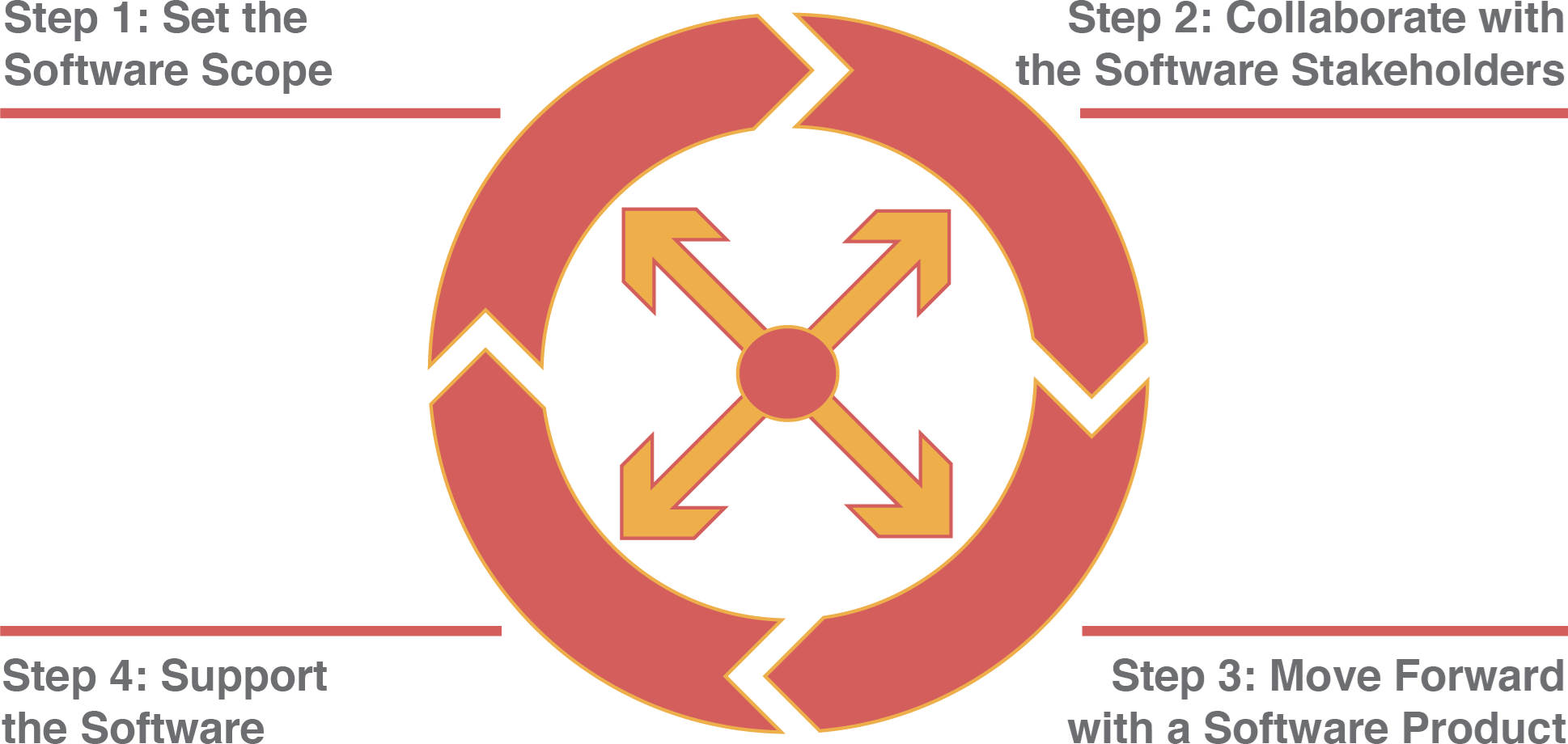See this guidebook for a newer resource on software adoption.
Executive Summary
Guidebook Purpose
During the past decade, there has been a veritable explosion of software options that are available to small city/rural/tribal transit agencies to assist them in improving their operations and passenger interactions. These software applications span the full range of small transit agency services—encompassing fixed route bus services and traditional and new generation demand responsive transportation—and include customer-facing applications such as map-based views of bus location and schedule adherence, trip planning, self-service booking of demand responsive trips, and fare payment and ticketing as well as operationally-focused software used by the agency to manage its core services. Moreover, a number of new technology companies have entered the transit market with new generation software products, and in response established software providers are raising their games and expanding the capabilities of their products. There has never been a better time for a small transit agency to take advantage of software to help achieve its objectives and improve service to its customers.
There are two dimensions to the opportunities afforded by these developments. First, software can be applied to existing services and their operations as a means of increasing operational efficiency, bolstering productivity, and improving the passenger experience. Second, the capabilities of the newer generation of software may stimulate an agency to re-imagine how it serves its passengers, since some software increases the viability of modes and digital services that may be entirely new to an agency. Software has the potential to fundamentally transform transit agency services.
With these opportunities also come significant challenges to small transit agencies that wish to take advantage of new software. Whether the software application is focused on internal operations or direct customer interaction, it may lead to—and/or require—significant adjustment in agency processes. Not only will staff need to be educated on how to use the software, but the agency may also need to make important internal changes to accommodate entirely new day-to-day work tasks—even as other tasks are largely automated by the software. Moreover, as the capabilities of available software expand the possibilities of the agency, it may need to create new types of customer or organizational relationships to actualize these possibilities.
The purpose of this Guidebook is to enable you and your agency to navigate the way forward in an informed fashion vis-à-vis the enhanced use of software for your services and by your customers.
Guidebook Structure
New software adoption has the potential to range from a relatively simple undertaking to an extremely complex one. While the details of an agency’s individual software adoption process are unique, specific to the intricacies of each agency applying it, the overall structure of the process can be generalized and broken down into a set of steps to follow. This Guidebook provides a four-step process to move from the initial stages of software consideration to later steps involving set-up, operations, and maintenance. The four steps are shown on the following page as a cycle of steps that often occur chronologically in the order shown, but do not necessarily follow such a sequence in all cases. The details of each step are contained within separate chapters.
The Guidebook closes with a series of worksheets. The worksheets walk a reader through the activities mentioned in each chapter, with clear guidance on how to apply the information. For some agencies, completing the worksheets individually or during a collaborative session could be the next step in better understanding how their own software adoption process could work. The worksheets help Guidebook users organize their thoughts, pinpoint gap areas, and plan for upcoming efforts.

About this Document
This document was prepared for CTAA by DemandTrans and Civic Sphere as part of the N-CATT cooperative agreement between CTAA and FTA. Primary authors were Dr. Roger Teal of DemandTrans and Janae Futrell of Civic Sphere. Opinions expressed or implied in this document are those of the authors. Nothing in this document is to be interpreted as position, policy or guidance from the United States Government. Incidental use of companies’ names or the names of their products is made solely to facilitate discussion and should not be regarded as recommendations or endorsements.
About N-CATT
The National Center for Applied Transit Technology (N-CATT) is a technical assistance center funded through a cooperative agreement with the United States Department of Transportation’s Federal Transit Administration (FTA). Operated by the Community Transportation Association of America (CTAA), the mission of N-CATT is to provide small-urban, rural and tribal transit agencies with practical, replicable resources that help them apply technological solutions and innovations. Among its activities, N-CATT produces a series of white papers, technical reports such as this document, and other resources, all of which can be accessed on-line at https://n-catt.org.


